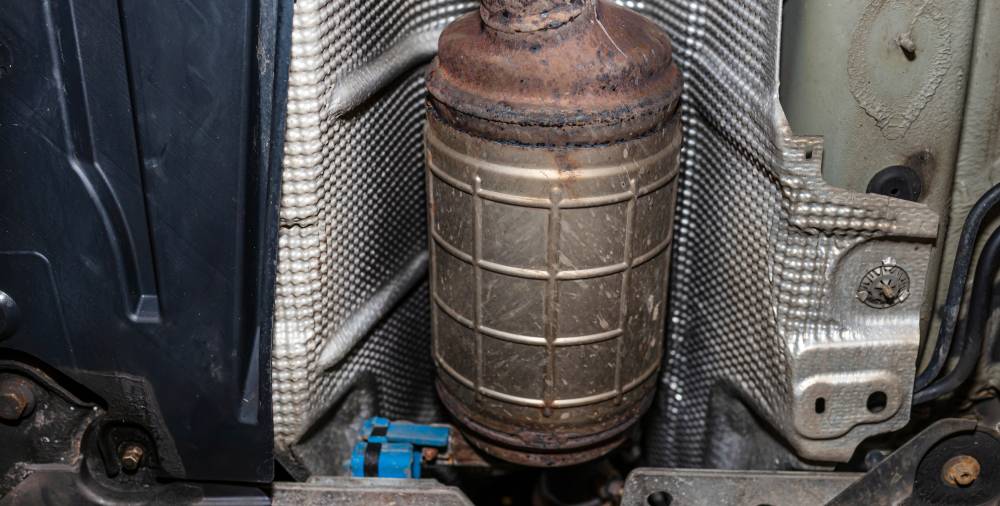The reaction between hydrogen, carbon, and oxygen causes the release of carbon dioxide and water. However, imperfect engine reactions result in incomplete combustion leading to the release of harmful emissions such as carbon monoxide, which is poisonous and disrupts the ozone layer.
A catalyst is a substance that speeds up the rate of a reaction. A catalytic converter is a simple but ingenious device that reduces harmful emissions from cars and trucks. French chemical engineer Eugene Houdry developed the first catalytic converter in 1950.
How Do Car Engines Work?
A car engines, like the human body, works through respiration. After consuming nitrogen and oxygen from the air, your engine will use gasoline as a source of energy. Gasoline is made up of isooctane, butane, ethylene, and methyl tert-butyl ether (MTBE), which acts as an octane enhancer. MTBE is the volatile, flammable and colorless component of gasoline. The presence of hydrogen in gasoline makes it a hydrocarbon. Your car engine usually takes hydrogen, carbon and oxygen from gasoline and combines them with nitrogen and oxygen from the air to produce energy. Nitrogen, carbon dioxide, and water vapor are the products of a successful combustion process.
Harmful Products of Engine Combustion
Nitrous oxide emissions are usually due to excessive heating during combustion. Carbon monoxide and hydrocarbons are products of incomplete combustion- one of the reasons you should avoid running your car engine in a closed space. Nitrous oxide will put you to sleep, and carbon monoxide will suffocate you.
The Importance of Oxygen Sensors
When the oxygen reaches the exhaust stream, your oxygen sensor will begin to work. An oxygen sensor is a small electrical device found immediately behind the exhaust manifold and is usually connected to your car’s computer system.
Your engine usually runs rich or lean. Oxygen sensors help monitor oxygen and temperature levels, ensuring optimal combustion. Although oxygen sensors help regulate and reduce nitrous oxide and carbon monoxide, a catalytic converter reduces harmful emissions. The catalytic converter is located in the exhaust system right behind the exhaust manifold.
How Does a Catalytic Converter Work?
A typical catalytic converter (cat) usually has an inlet and an outlet. Inside the device, there are two substrates made of ceramic material. The magic of the catalytic converter takes place in the substrates. Ceramic does not react with anything and is usually super-hot to allow reactions to take place. About 3-7 grams of additional rare metals in the cat (Platinum, Rhodium and Palladium) react with the emissions in two stages:
- Reduction Stage
Platinum and Rhodium reduce nitrous oxide, causing the release of benign N2.
- Oxidation Stage
Platinum and Palladium bind freed up oxygen from the first stage and the oxygen molecules in the exhaust to carbon monoxide releasing carbon dioxide into the environment. This stage involves the additional binding of oxygen to unburnt hydrocarbons.
The chambers in catalytic converters have a honeycomb pattern, which increases the surface area for reactions to occur while minimally affecting exhaust flow. Rattling in your catalytic converter means the honeycombs have broken up into little chunks and thus require replacement. Some cars have a pre-cat, which is located closer to the engine. The location of the pre-cat ensures that the ceramics get hot quicker. However, the nature of pre-cats makes them susceptible to wear and tear.
How to Take Care of Your Catalytic Converter?
The rare metals found in catalytic converters make the device expensive. Therefore, it is crucial to maintain it by regularly changing your:
- Air filters to ensure maximum entry of fresh air
- Oil reacts with metals leading to excess heat in the system, causing incomplete combustion
- Fuel filter to ensure supply of clean fuel
AZ, Performance Muffler is a highly rated automotive exhaust company located in Phoenix. We offer a wide variety of car services, including catalytic converter (catalytic converter symptoms) repair and replacement. Contact our offices to get a new catalytic converter today.

